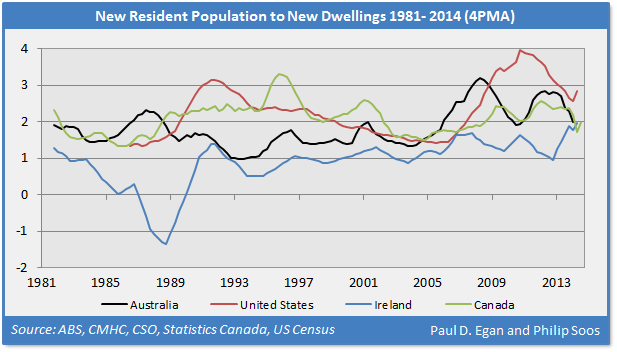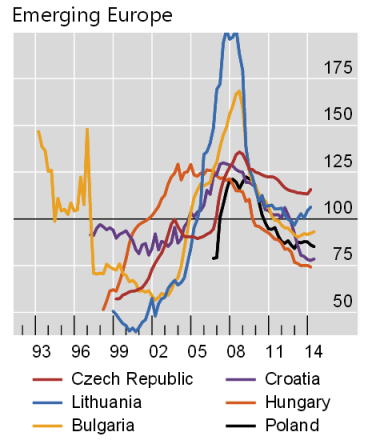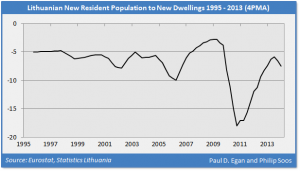Canada probably has the world's largest current housing bubble, but with a ratio of 2.1 between 1996 and 2014 (similar to Australia's), it is highly unlikely this country has a housing shortage. Canada's ratio closely tracked that of the US pre-GFC, and continued post-GFC while the US housing market crumbled.

Advertisement
No country better illustrates the utter absurdity of the housing shortage argument than Lithuania. This country experienced an insane housing bubble in recent times, with the real (seasonally adjusted) housing price index increasing from 25 in 2001 to 200 in 2007; a boom of 700 per cent! This is an average annual increase of 117 per cent between 2001 and 2007. The Lithuanian housing bubble dwarfs even the massive Irish bubble, approximately double the size in real terms from trough to peak.

While data from Statistics Lithuania are clearly not as reliable as the ABS or the statistical offices of other developed nations, it is sufficient enough to show the trends in housing and population during the boom and bust. Its population has been in constant decline since independence (Modern Lithuania).
Lithuania has a housing stock of around 1.3 million, which hasn't grown. Unsurprisingly, between 2004 and 2013 (where data are available), the total housing stock declined by 0.2 per cent or by almost 2,000 dwellings. Population fell by 12.6 per cent or a net -427,000 persons over this period. Although both dwellings and population have fallen, this translates into an effective decrease of 214 people per net demolished dwelling!
Even though the housing stock declined slightly, there was a constant flow of building completions of a couple thousand per quarter, likely replacing old dwellings in prime locations. Comparing the ratio of net population change to building completions yields a persistently negative ratio, given the extreme net emigration. In 2007, the Lithuanian population fell by 40,000 while the housing stock increased by 6,000 dwellings – as prices boomed to its peak.

Advertisement
It is clear dwelling shortages were never the cause of the international housing booms, but Australian commentators continue to blithely make this assertion. The most authoritative body on this issue, the (now abolished) National Housing Supply Council (NHSC), made these claims in numerous reports. Their comprehensive analysis is well worth reading, given the wide-ranging study of Australia's residential property market.
Unfortunately, the NHSC analysis is identical to those authored in the United States, during the build-up to its largest housing bubble on record. The conflicted NHSC produced questionable analysis to arrive at a preconceived conclusion. As one of the authors previously stated:
Discuss in our Forums
See what other readers are saying about this article!
Click here to read & post comments.
1 post so far.